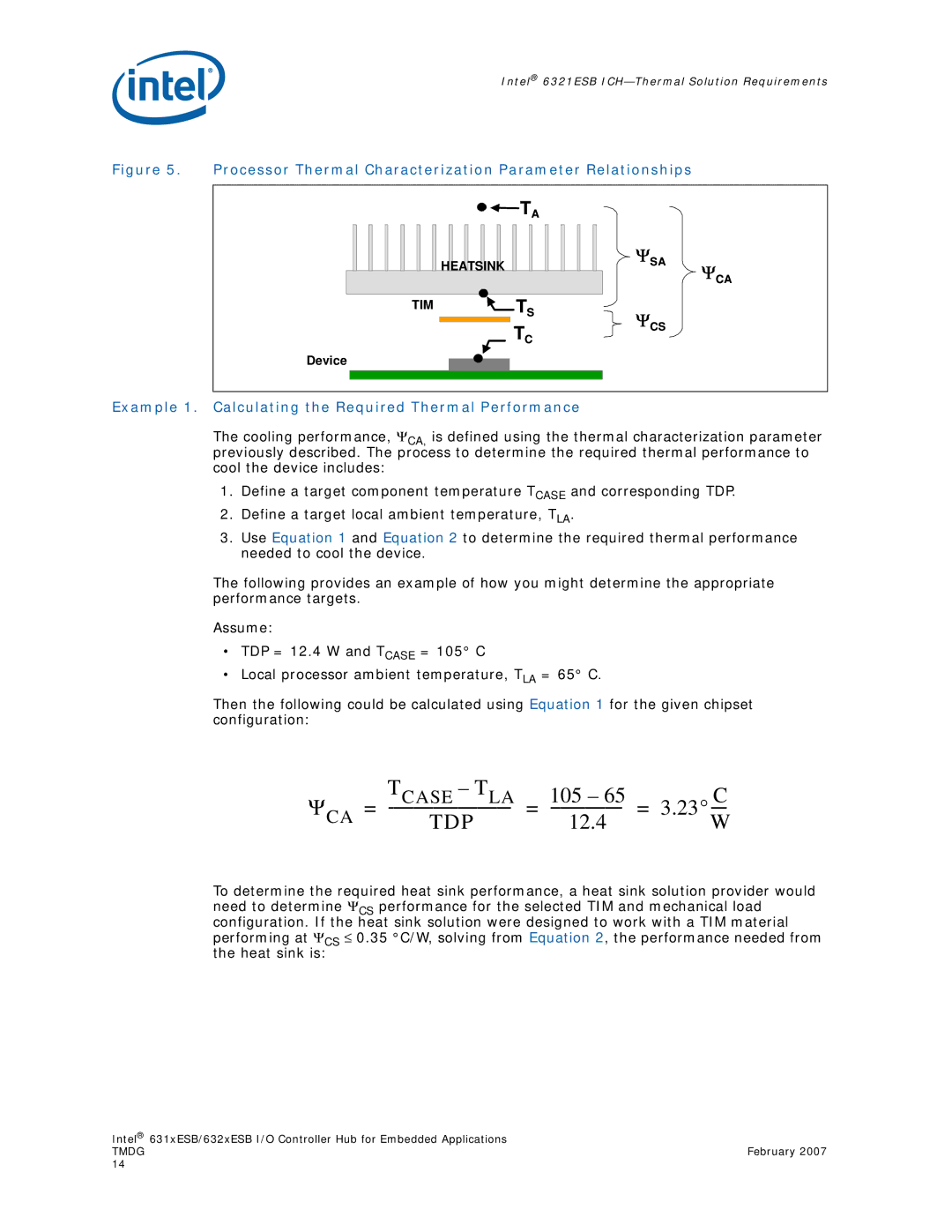
Intel® 6321ESB
Figure 5. Processor Thermal Characterization Parameter Relationships
TA
HEATSINK
TIM ![]() TS
TS
TC
Device
ΨSA
ΨCS
ΨCA
Example 1. Calculating the Required Thermal Performance
The cooling performance, ΨCA, is defined using the thermal characterization parameter previously described. The process to determine the required thermal performance to cool the device includes:
1.Define a target component temperature TCASE and corresponding TDP.
2.Define a target local ambient temperature, TLA.
3.Use Equation 1 and Equation 2 to determine the required thermal performance needed to cool the device.
The following provides an example of how you might determine the appropriate performance targets.
Assume:
•TDP = 12.4 W and TCASE = 105° C
•Local processor ambient temperature, TLA = 65° C.
Then the following could be calculated using Equation 1 for the given chipset configuration:
ΨCA = | TCASE – TLA |
| 105 – 65 |
| C |
= | = |
|
To determine the required heat sink performance, a heat sink solution provider would need to determine ΨCS performance for the selected TIM and mechanical load configuration. If the heat sink solution were designed to work with a TIM material performing at ΨCS ≤ 0.35 °C/W, solving from Equation 2, the performance needed from the heat sink is:
Intel® 631xESB/632xESB I/O Controller Hub for Embedded Applications
TMDGFebruary 2007 14
